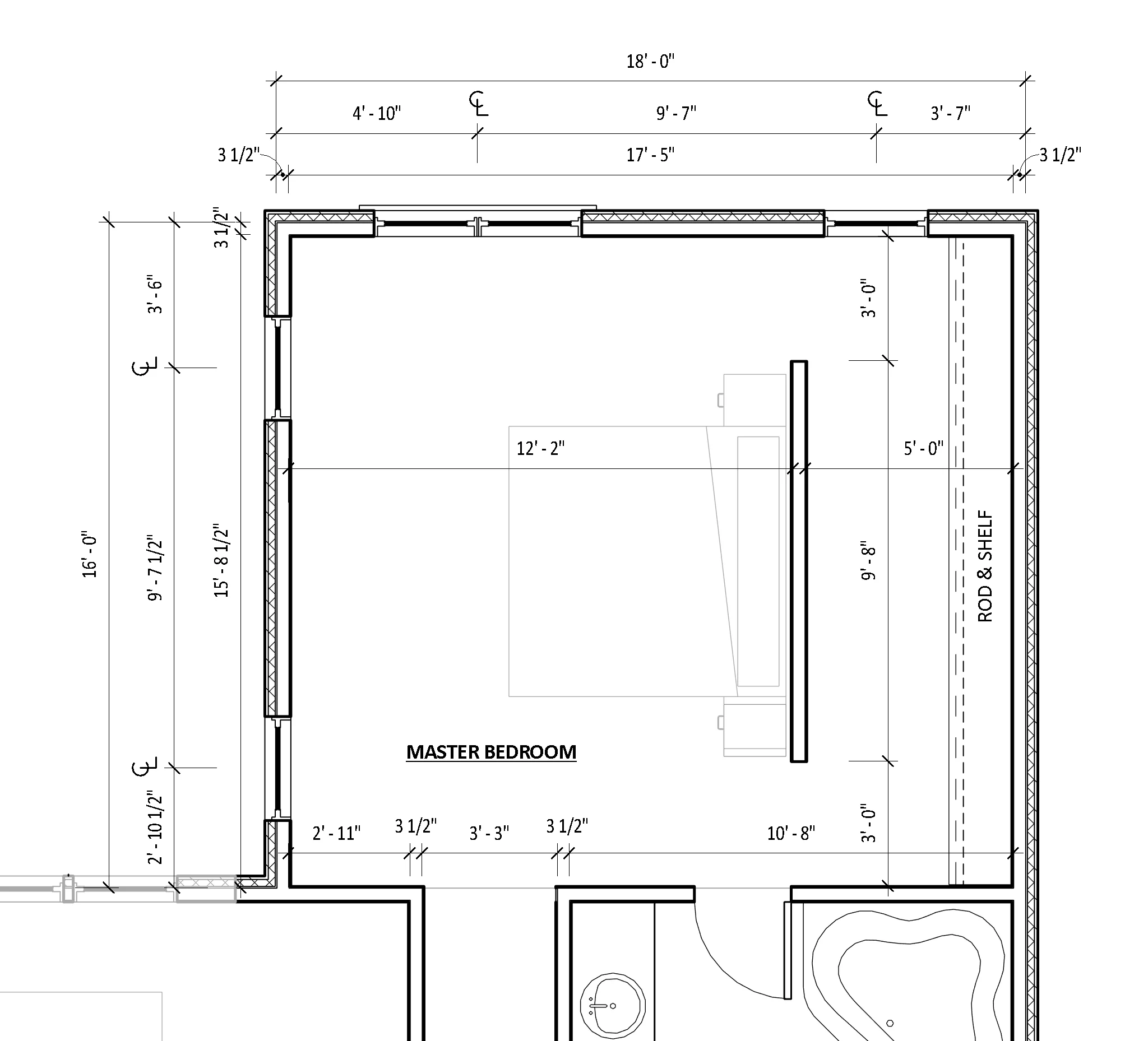Popular Master Bedroom Floor Plan Layouts: Master Bedroom Floor Plans With Measurements
A master bedroom floor plan is the blueprint for the most private space in a home. It’s where you relax, recharge, and create a sanctuary that reflects your personal style. The layout of your master bedroom can significantly impact the functionality and aesthetics of the space, influencing everything from furniture placement to the flow of movement.
Here, we explore some of the most popular master bedroom layouts, highlighting their advantages and disadvantages, and providing examples with measurements to help you visualize and plan your dream bedroom.
Walk-in Closets, Master bedroom floor plans with measurements
A walk-in closet is a luxury feature that adds functionality and organization to a master bedroom. It provides ample space for clothing, shoes, accessories, and even a dedicated area for ironing or folding clothes. A walk-in closet can be accessed directly from the bedroom or through an en-suite bathroom.
The size of a walk-in closet can vary greatly depending on the overall size of the bedroom and the homeowner’s needs. A standard walk-in closet can be as small as 5′ x 5′ or as large as 10′ x 12′. A larger walk-in closet can be divided into different sections for specific purposes, such as hanging clothes, shelving, drawers, and even a dressing area with a mirror and seating.
Here is an example of a walk-in closet layout with dimensions:
| Dimension | Description | 8' x 10' | Overall closet size | 6' x 4' | Hanging clothes area | 2' x 4' | Shelving unit | 2' x 2' | Drawer unit | 2' x 2' | Shoe storage area | 2' x 2' | Dressing area | <br>
Pros of Walk-in Closets: <ul> <br> Cons of Walk-in Closets: <ul> <h3>En-suite Bathrooms</h3> <br> The size of an en-suite bathroom can vary depending on the overall size of the house and the homeowner's preferences. A standard en-suite bathroom can be as small as 5' x 7' or as large as 10' x 12'. A larger en-suite bathroom can accommodate a separate shower and bathtub, as well as a walk-in closet. <br> Here is an example of an en-suite bathroom layout with dimensions: <br> |
Dimension | Description | 8' x 10' | Overall bathroom size | 4' x 4' | Shower area | 3' x 5' | Vanity area | 2' x 3' | Toilet area | <br>
Pros of En-suite Bathrooms: <ul> <br> Cons of En-suite Bathrooms: <ul> <h3>Sitting Areas</h3> <br> The size of a sitting area can vary depending on the overall size of the bedroom and the desired level of privacy. A small sitting area can be as small as 6' x 6', while a larger area can be as large as 10' x 12'. <br> Here is an example of a sitting area layout with dimensions: <br> |
Dimension | Description | 8' x 10' | Overall bedroom size | 6' x 6' | Sitting area | 2' x 4' | Coffee table | 3' x 3' | Armchair | 3' x 3' | Sofa |
|---|
Pros of Sitting Areas:
- Provides a dedicated space for relaxation and privacy.
- Creates a more inviting and comfortable atmosphere in the bedroom.
- Allows for multi-functionality in the bedroom.
Cons of Sitting Areas:
- Requires additional square footage, which can be a constraint in smaller bedrooms.
- Can make the bedroom feel cluttered if not properly designed and furnished.

